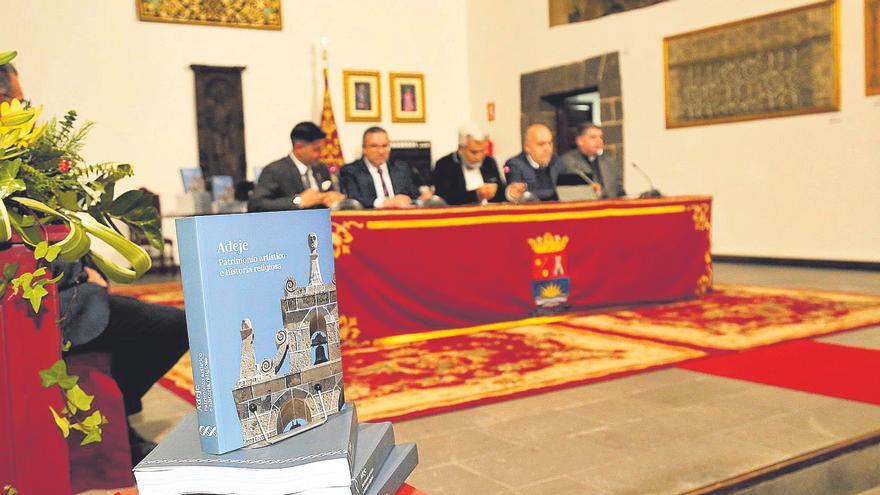
Adeje, Artistic Heritage and Religious History It is an initiative of the Mayor’s Office and the Department of Heritage to value the heritage wealth of Adejeras, so that “future generations can recognize, appreciate and care for them,” stressed the mayor, José Miguel Rodríguez Fraga. It’s about a book Fruit of the collaboration of the City Council and the Editorial Lhorsa Arte & Eventos, which formed the work team made up of historians, restorers and education professionals. The process required consultations with multiple civil and religious historical archives.
Rodríguez Fraga maintains that “this publication take a look at the tangible and intangible values that we have received as a legacy, of incalculable value, granted by the people who for centuries have shaped the reality and idiosyncrasy of our municipality. In his opinion, Adeje, Artistic Heritage and Religious History “is a work of great value that shows the importance of heritage for the municipality. The book does not only refer to things, works of art, architecture, culture or historical texts; the book provides the human factor, surnames and names are those that Adeje would not have traveled and that has brought us here ».
Research and data collection started in 2018, although the City Council has been rescuing its historical, artistic and cultural heritage for more than 30 years. A period in which it has been restoring, recovering and disseminating through different projects, agreements and publications all its historical wealth.
In more than 400 pages, testimonies, historical contributions and photos are collected
This work joins other municipal publications, such as the rescue of the Casa Fuerte Historical Archive, the recovery of the book of miracles of the Virgen de la Encarnación, among others. “Knowing where we come from to chart the course we are heading as a people, that’s what this book is for us,” the councilor added.
The book
In his more than 400 pages, adejeArtistic Heritage and Religious History collects historical contributions on the movable and immovable property of the Adejero religious heritage, testimonies, photographs and customs of what was and is the historical legacy of the Villa. Divided into five chapters, the first refers to the Ponte family and Villa de Adeje; the second details the parish church of Santa Úrsula; the Franciscan convent of Our Lady of Guadalupe and San Pablo occupies chapter three; the hermitages and their cults form the fourth chapter and the fifth is dedicated to the new patrimony of adejero, distributed by its geography.
Fourteen authors and thanks
The content of this book arises from the research carried out by 14 authors, after extensive consultation with multiple historical archives. The participation of Rosario Álvarez Martínez, president of the Royal Canarian Academy of Fine Arts, as well as the prologue by the official chronicler of Vilaflor, Nelson Díaz Frías, stand out. The Adejero City Council is especially grateful for the involvement of José María Mesa Martín, Juan Alejandro Lorenzo Lima, Rubén Sánchez López, Pablo Hernández Abreu, Carlos Rodríguez Morales, Pablo Francisco Amador Marrero, Juan Luis Bardón González, José Lorenzo Chinea Cáceres, Yago Viso Armada, Manuel Jesús Hernández González, Óscar Cabeza Encinoso, Lorenzo Santana Rodríguez and Juan Desiderio Afonso Ruiz, authors who have left their mark on this book, and Lilia Esther Rodríguez Martín, institutional and technical coordinator responsible for the Heritage area and the Canary Islands Library from Adeje. | DE
















